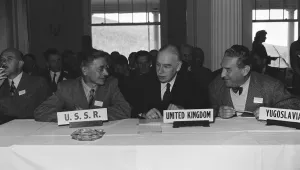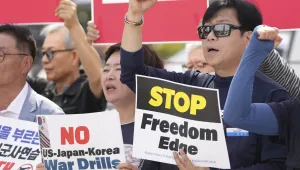International Security is America's leading peer-reviewed journal of security affairs.
Summary
In East Asia the United States cultivated a "hub and spokes" system of discrete, exclusive alliances with the Republic of Korea, the Republic of China, and Japan, a system that was distinct from the multilateral security alliances it preferred in Europe. Bilateralism emerged in East Asia as the dominant security structure because of the "powerplay" rationale behind U.S. postwar planning in the region. "Powerplay" refers to the construction of an asymmetric alliance designed to exert maximum control over the smaller ally's actions. The United States created a series of bilateral alliances in East Asia to contain the Soviet threat, but a congruent rationale was to constrain "rogue allies"- that is, rabidly anticommunist dictators who might start wars for reasons of domestic legitimacy and entrap the United States in an unwanted larger war. Underscoring the U.S. desire to avoid such an outcome was a belief in the domino theory, which held that the fall of one small country in Asia could trigger a chain of countries falling to communism. The administrations of Harry Truman and Dwight Eisenhower calculated that they could best restrain East Asia's pro-West dictators through tight bilateral alliances rather than through a regionwide multilateral mechanism. East Asia's security bilateralism today is therefore a historical artifact of this choice.
Cha, Victor. “Powerplay: Origins of the U.S. Alliance System in Asia.” Winter 2009/10
The full text of this publication is available in the link below.



